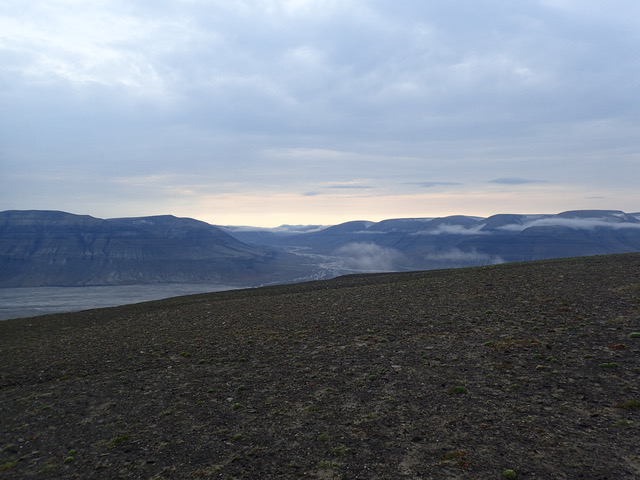Cette publication est également disponible en :
![]() Français
Français

Thesis defended by Franziska Blattman – September 19th, 2023 – Institute of Earth Surface Dynamics (IDYST).
This thesis focuses on gaining a better understanding of organic carbon cycle perturbations following the Permian-Triassic mass extinction (PTME). The PTME took place roughly 252 million years ago and is considered the largest extinction in Earth’s history due to its incredibly high loss of fauna. The Early Triassic is the epoch following the PTME and it is marked by delayed biotic recovery and major carbon cycle perturbations.
The carbon cycle is the amalgamation of a multitude of processes by which carbon moves through the Earth system. It involves the transfer of carbon between living organisms, the atmosphere, soil, ocean, and geosphere, which are also referred to as carbon pools. Carbon can exist in different forms, including carbon dioxide, organic matter, and inorganic carbon. The transfer of carbon between different pools is essential for regulating the Earth’s climate and supporting life on our planet. When the carbon cycle is disrupted, it can lead to significant changes in the Earth’s climate and ecosystems. By studying past carbon cycle perturbations, particularly in occurrence with mass extinctions, one can gain insight into how the Earth’s climate and ecosystems responded to such disruptions. This is relevant as it can help predict and potentially mitigate the effects of ongoing and future climate change.
Carbon cycle perturbations are evidenced today as well as in the geological past through carbon isotope fluctuations. Isotopes are defined by the different numbers of neutrons in the nuclei of an element. The stable carbon isotopes are 12C and 13C. 12C is the most common and the lighter isotope of carbon, while 13C is rarer and heavier as it contains one more neutron. This difference in weight will result in preferential incorporation of 12C over 13C in chemical reactions such as photosynthesis. During photosynthesis, when living organisms take up carbon dioxide (CO2) from the atmosphere to form sugars (i.e., organic carbon), the lighter 12C is more likely incorporated. This creates a signature 13C to 12C ratio, which is referred to as δ13C. This preferential uptake is called fractionation and this process allows carbon isotopes to be used to trace origin, fluxes and relationships between the various carbon pools within the carbon cycle.
My thesis focuses on the Smithian and Spathian substages of the Early Triassic approximately 2 million years (My) after the PTME and spanning a time interval of about 2.5 My. Past work has shown that the transition from Smithian to the Spathian is marked by a global δ13C positive excursion, a change from a hot house to a cold house world, biological radiation and extinction pulses of marine organisms, and a shift in terrestrial vegetation. The results of my thesis further our knowledge by showing that carbon sequestration from the atmosphere to slower cycling pools, such as the deep ocean, was happening earlier and more rapidly than previously thought. Marine and terrestrial systems seem to have contributed differently to the global carbon cycle via emission and sequestration of atmospheric carbon at separate times during the studied interval. This is indicated in differences between δ13C values of terrestrial and marine pools. These differences can be linked to various mechanisms influencing the production, preservation, and destruction of organic carbon. These include primary productivity, which is coupled with the nutrient cycle, biotic and abiotic factors controlling organic matter preservation in sediments and soils as well as physical factors such as oceanic circulation, which are linked to temperature. The terrestrial carbon cycle varied likely due to the change in dominant vegetation, the increased storage of carbon in soils via the hypothesized formation of permafrost soils, and the decrease of soil organic matter decomposition. In the marine system the efficiency of the biological carbon pump determined carbon sequestration in the deep ocean and marine sediments. The biological carbon pump refers to the process by which marine organisms facilitate the transfer of carbon from the surface to the deep ocean.
To summarize, the findings of this work reflect an irreversible change of the carbon cycle across the studied time interval in both marine and terrestrial environments. The observed changes of the carbon cycle are intertwined and have positive feedback mechanisms with other biogeochemical cycles and temperature. As with most research more work needs to be conducted to better constrain the global change.


